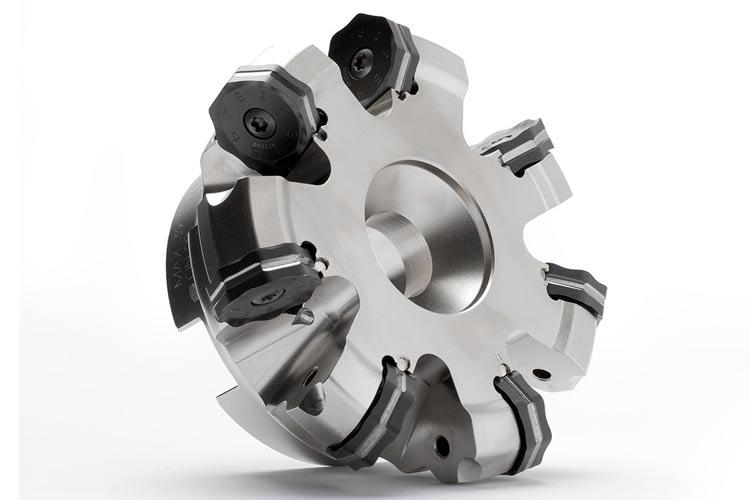Designed to increase metal removal rates in steel and cast iron applications, the new Seco Double Octomill High Feed face mill features 16 cutting edges per insert and brings versatility, productivity and economy to roughing operations. While traditional face mills typically use inserts with four edges, the Double Octomill High Feed, available in diameters from 80 mm to 160 mm, incorporates insert pockets with a negative axial angle that allows for double-sided inserts with a total of 16 cutting edges. The inserts themselves use a positive rake angle to minimise power consumption while achieving higher cutting speeds for a significant increase in productivity.
Seco has further enhanced the cutter’s performance by grinding location grooves on the inserts to ensure precise and stable positioning in relation to the edge and seat of each insert pocket, which allows very tight tolerances to be held. Each pocket incorporates a strong centre lock screw and axial and radial high speed steel (HSS) location pins that mesh with the insert grooves. These pins increase tool life because the pockets do not wear out as fast when compared with a traditional face mill. Additionally, the Double Octomill High Feed cutter body features a hard HV 700 coating that protects the tool from wear and prevents chips from welding onto the cutter.
Seco offers a comprehensive ON09 insert range for the Double Octomill High Feed, with three first-choice insert geometries (M12, M14 and MD16) and four first-choice grades (MP1500, MP2500, MK1500 and MK2050). This range of inserts allows the cutter to be successfully applied across a wide range of steel and cast iron applications. The Double Octomill High Feed is available in normal pitch versions.
In terms of machining parameters, manufacturers can combine a shallow depth of cut with high feed per tooth and use the Double Octomill High Feed to achieve higher metal removal rates and increased part production. Such parameters also increase process stability and tool life by directing the cutting forces axially, which reduces the risk of vibration.


